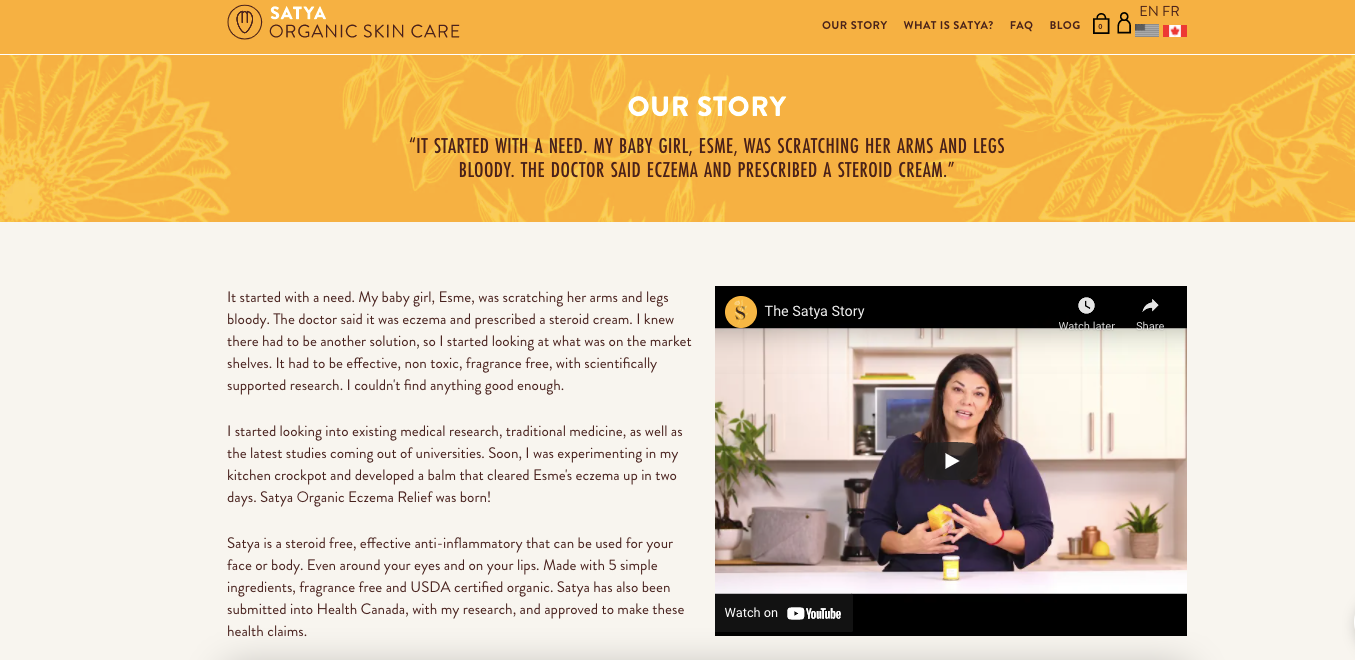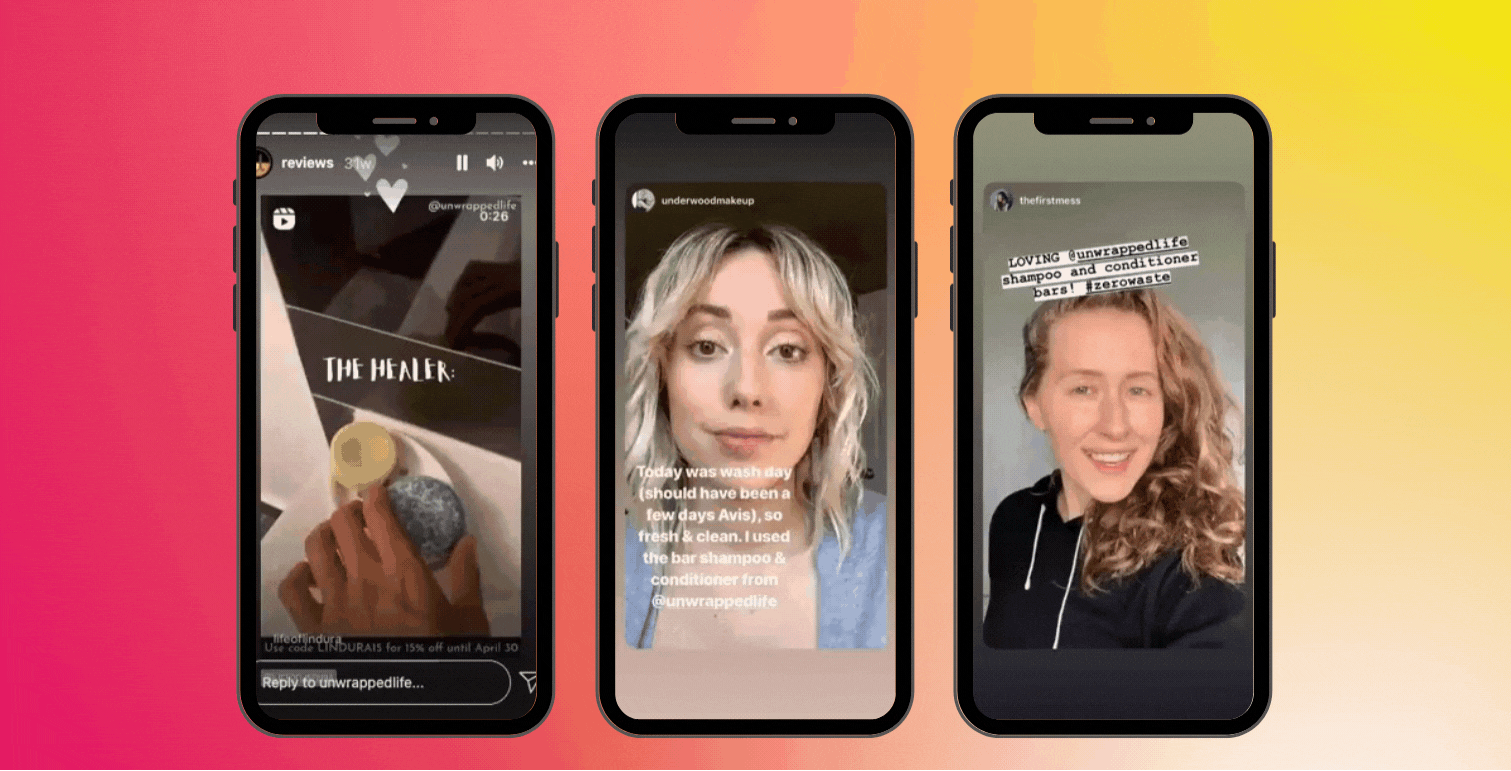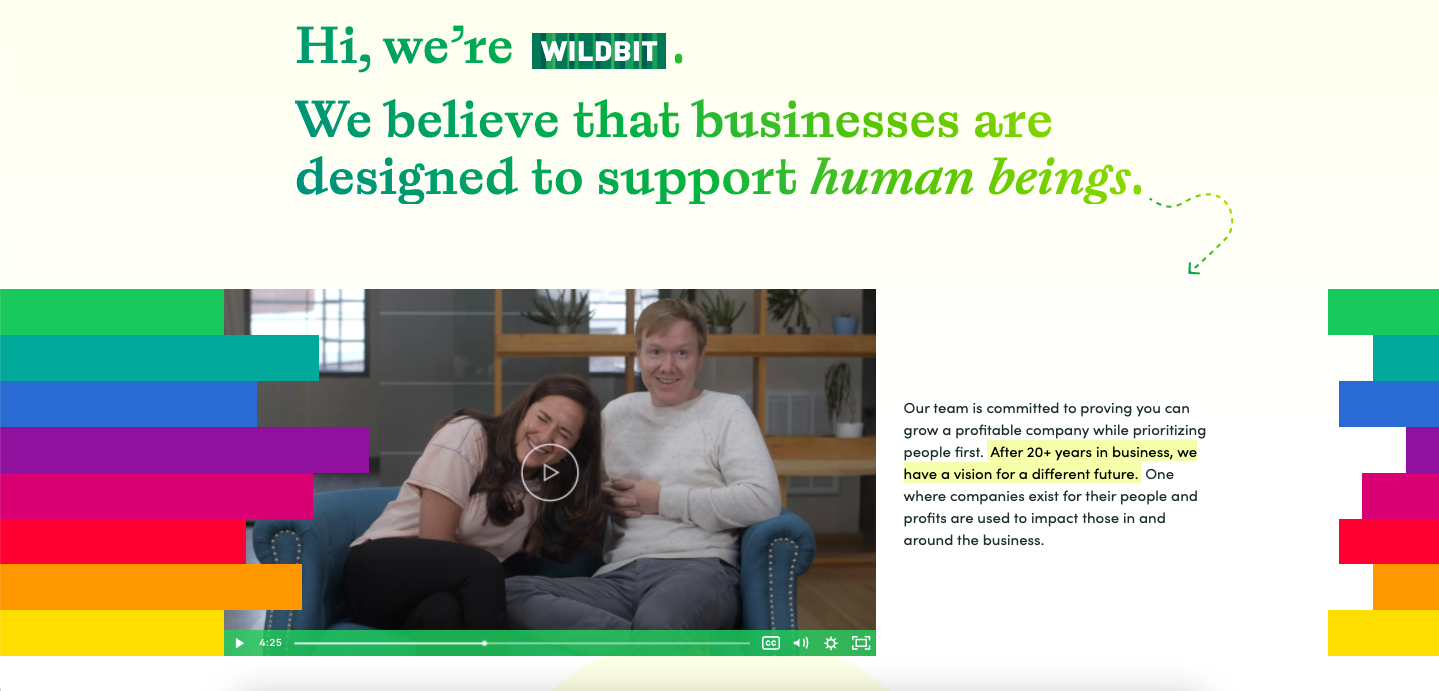As a small business owner, you have a lot to deal with. The last thing you probably want to do is add video marketing to your list of responsibilities, especially if you have no experience with video and don't know where to start.
Many small business owners and entrepreneurs are hesitant to use video marketing because they think it's too complicated, time-consuming, or even expensive. You're not alone: 16% of non-video marketers don't use video marketing because they don't have time, while another 17% don't use video marketing because they think it's too expensive.
Video marketing doesn't have to cost a lot of money or take up a lot of your time. This article will show you some time-saving AND cost-effective ways to quickly get started with video marketing for your small business.
Why small businesses should use video marketing
We see big-budget videos from brands like Nike all the time, so making a huge impression with video on a budget may feel impossible. But one of the biggest benefits of video marketing, is that small-budget videos have the potential to go just as viral as more established brands. Even for a mom-and-pop shop, video can be a great way to attract new audiences, engage and delight existing customers and even generate sales.
5 video marketing ideas for small businesses
There are so many ways you can use video for your small business, and it can be a little overwhelming to know where to start, especially if you don’t have much time. Don’t worry! To help save you save some time (and money), here are five results-driven types of videos any small business can default to.
1. Brand story videos
Brand story videos give people more insight into your business’s history, your mission, and what sets you apart from your competitors.
64% of consumers find brands that communicate their purpose more attractive, and 52% say they’re more motivated to buy from certain brands if they stand for something bigger than just their products and services and if the brand values align with their own personal values.
Therefore, getting personal about your background and your values, especially in a medium as intimate and immersive as video, could be the thing that spark’s a sense of connection.

In her brand story video, Satya founder Patrice Mousseau talks about how her daughter's skin conditions and eczema diagnosis motivated her to create non-toxic and fragrance-free skin products. We love this video because it's brief and straightforward. Standing in her kitchen, Mousseau looks directly at the camera and shares her experience in a little under a minute. She also makes the video intimate by inviting her audience into her space.
2. Product videos
Product videos show off your products, their benefits, and how they work.96% of people have used video to learn more about a product or service, so product videos are an excellent way for small businesses to show their products in action and get seen by potential customers.
Teton Sports is a Women-Owned Small Business (WOSB) that sells outdoor adventure gear. In this product video, they show off one of their canvas tents in action. This video just has music, captions, and a quick demonstration. It’s a great example of a simple and to-the-point video that can easily be made on a small budget — and it has over 40,000 views.
3. Educational videos
Educational videos allow you to establish yourself as an authority or expert in your field by educating your audience on topics in your industry or niche. This can come in the form of guides, tutorials, Q&As, or tips and tricks.
Rather than explicitly selling your products or services, you instead provide value to your audience by teaching them something new — usually how to complete a task — related to the product you sell. This helps build trust with your audience and gain more credibility in your industry.
In this tutorial, Deadstock Coffee & Gallery shows its audience how to make coffee at home. The video is educational and also has no high production value. Small businesses on a budget and with limited time can create something similar using just their cameras or smartphones without relying on any fancy video tricks.
4. Social proof videos
Social proof is the idea that the actions and opinions of others influence our behavior. When it comes to your small business marketing videos, you can use the authority and influence of people outside your business to create social proof and build positive brand sentiment.
These types of videos can include customer testimonial videos and product reviews, video collaborations with brand ambassadors or influencers, or user-generated video content from your customers on social media.

Health and beauty brand Unwrapped Life reshares Instagram video reviews from its customers on their Instagram highlights. If you're already pressed for time, then resharing videos like this is an excellent tactic for your video marketing because you don't have to create new videos from scratch. And you also boost your social proof by showing off your customers raving about your products.
5. Behind-the-scenes videos
Behind-the-scenes videos give your customers a glimpse of the person or people behind your business. For example, you can create meet-the-team videos, share personal stories, or highlight day-to-day activities in your business, including how your products are made or your interactions with customers.
One of the advantages of behind-the-scenes videos is they don't require much time to create. Kirrin Finch, for example, is a conscientious menswear-inspired apparel, and on their Instagram account, they have this short behind-the-scenes video clip that shows how they create their clothing.
How to quickly create marketing videos for your small business on a budget
Here are some steps you can take to create effective videos for your small business in a day or two (or even in hours) and at a low cost.
Step 1: Establish your goal
Before you get started creating your video, you’ll first need to set some clear goals. One way you can do this by starting with the big “WHAT.” Ask yourself, “what is the purpose of my video?” This will help you define your goal. Here are a few examples of some goals you can create and the types of videos to go along with them:
- To increase brand awareness (brand story videos)
- Drive sales (product videos)
- Educate your customers (educational videos)
- Increase credibility and trust (social proof videos)
Every decision you make with your video must align with your goals.
Step 2: Come up with ideas
Start by getting ideas and taking inspiration from your peers, competitors, and larger brands.
If you're on Twitter, you can create Twitter lists or use the pages to watch features on Facebook to spy on your competition and on larger brands. Watch their videos and take note of their strengths and identify areas of weakness you can improve on.
If you have a blog, then you can also use your website analytics to identify top-performing posts and then repurpose that content in your videos.
Lastly, if you already have a social media presence, you can get ideas for topics by analyzing your top-performing posts. You can also set up some social listening to help you keep track of frequent comments and questions from your customers you can address in videos.
Step 3: Prepare a script
Writing a script will help you create structure for your video, build a narrative, and map out the entire flow for your video. And if you’re camera shy, having something planned and written out may also help reduce nerves.
Depending on the goals for your video, you can include things like an introduction, call to action (CTA’s), product features, etc. Here is a detailed step-by-step guide for creating a video script.
Step 4: Gather your tools
Before you get started filming, gather all the tools you’ll need for your small business video production.
For filming, you don’t need any fancy or expensive camera equipment. Just your smartphone will do. You can also purchase an affordable tripod for your smartphone to help prevent shaky videos and a microphone to help enhance your video’s audio.
You can also create free video thumbnails and video cover art on Canva.
And lastly, here are six easy-to-use video editing software for small businesses that’ll make your final videos look professional and well-edited.
Step 5: Select your location
Don’t forget about the location, location, location! If you’re shooting indoors, make sure your subject or products are well lit. And when shooting outside, closely observe where the sun is to prevent glare or shadows.
Whether you're shooting indoors or outside, choose a location free of any background noise or unnecessary distractions.
Step 6: Hit record
After you've done all the prep work, you're ready to record! And remember, you don't have to be Martin Scorsese or aim for high-quality video production. Rather than striving for perfection, focus on bringing your authentic self and communicating your small business's core values to existing and new customers, flaws and all. Now: lights, camera, action!
Four low-cost tips for promoting your small business videos
Now that you’re done with the video production, it's time to focus on promotion and distribution. Again, this can be done on a small budget by following these tips.
1. Share your videos on social media
According to a report from the Pew Research Center, seven in ten people are on social media. Therefore, social media is one of the best places to promote your video, and Buffer makes it easy for you to share your videos across multiple platforms quickly. We also have guides to help you get set up and optimized on YouTube, which as the most widely used social media platform, is an excellent platform to promote your videos.
2. Use video on your landing page
84% of people have been convinced to buy a product or service after watching a brand video. Since your website is where people will most likely go to purchase your product or services, it makes sense to have a video about your business on your landing page to help drive sales.

If you're a new small business and don't have a website yet, you can use our Start Page to create a mobile landing page. On your page, you even have the option to include a link to a YouTube video you want your target audience to see.
3. Partner with influencers
The benefit of working with influencers is they can help your brand get larger exposure and reach and also increase your social proof. Not only do 49% of consumers depend on influencer recommendations, but 40% have made a purchase after seeing something on Twitter, YouTube, or Instagram.
For small businesses, micro-influencers are often the best to collaborate with because they have a niche target audience or a smaller but well-engaged following than larger influencers. They also tend to be more affordable or are willing to do partnerships in exchange for free products.
4. Use paid social advertising
Boost your videos and help them get seen by more people by using paid social advertising, especially if you've noticed they're already doing well organically.
Facebook ads or Instagram ads are the most commonly used ad platforms by small businesses, and the advantage of using either one is your ads will never cost more than you have to spend.
Use Buffer to help manage your small business video production and distribution
Small business video marketing may seem time-consuming, expensive, and intimidating. But it doesn't have to be. Buffer has a wide range of tools and resources to help small business owners, startups, and entrepreneurs with their video marketing strategy and content marketing campaigns. From time-saving templates, a free landing page for your small business, a scheduling tool to help you plan and distribute your social media posts, to a library full of free resources like this one, Buffer is an all-you-need marketing tool for small businesses.





